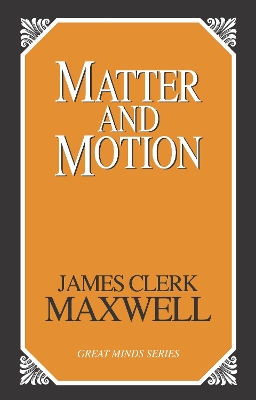Works in the Philosophy of Science 1830-1914
1 total work
This primer on physics, written in 1877 by the most eminent physicist of the 19th century, is intended as a brief introduction to Newtonian mechanics for students and educated lay readers. Though by modern standards this small work covers no new ground, it attests to the logical rigor and powers of elucidation of a scientific genius, whose insights into electromagnetism and the chemistry of gases were pivotal to the great discoveries in physics during the 20th century. Einstein described Maxwell's influence on the scientific understanding of the physical universe as "the most profound and the most fruitful that physics has experienced since the time of Newton." Maxwell's ideas also laid the groundwork for Max Planck's subsequent development of the quantum hypothesis.
In seven concise and lucidly written chapters, Maxwell covers all the basic concepts of physics: time, space, matter, mass, force, momentum, velocity, acceleration, laws of motion, work, energy, gravitation, and many other ideas. This edition also includes a chapter on equations of motion from Maxwell's classic Electricity and Magnetism, plus two appendices, one on the relativity of motion and the other on the Principle of Least Action.
Complete with many useful illustrations to clarify the concepts discussed in the text, this accessible work is well suited for history of science courses or as a still-relevant introduction to basic physics for the average reader.
In seven concise and lucidly written chapters, Maxwell covers all the basic concepts of physics: time, space, matter, mass, force, momentum, velocity, acceleration, laws of motion, work, energy, gravitation, and many other ideas. This edition also includes a chapter on equations of motion from Maxwell's classic Electricity and Magnetism, plus two appendices, one on the relativity of motion and the other on the Principle of Least Action.
Complete with many useful illustrations to clarify the concepts discussed in the text, this accessible work is well suited for history of science courses or as a still-relevant introduction to basic physics for the average reader.
